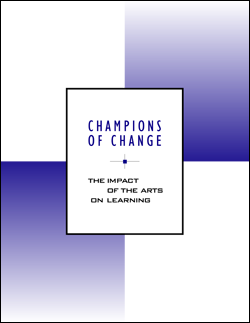Cultural Policy
The need to better understand and articulate the broad societal value of arts and culture is at the heart of a discussion among a growing circle of arts grantmakers and scholars in the U.S.
Read More...I have had, with my friend Wes Jackson, a number of useful conversations about the necessity of getting out of movements — even movements that have seemed necessary and dear to us — when they have lapsed into self-righteousness and self-betrayal, as movements seem almost invariably to do. People in movements too readily learn to deny to others the rights and privileges they demand for themselves. They too easily become unable to mean their own language, as when a “peace movement” becomes violent.
Read More...1999, 316 pages, $22.50 (softcover); New York University Press, New York and London
Read More...1999, 128 pages; National Arts Journalism Program, Columbia University Graduate School of Journalism, 2950 Broadway, MC 7200, New York, New York 10027.
There is both good news and bad news in Reporting the Arts, the first comprehensive study of journalistic arts coverage in the United States, recently completed by the National Arts Journalism Program at Columbia University with funding from The Pew Charitable Trusts.
Read More...The beautifully-restored Southern Theater in Columbus, Ohio served as classroom May 5 and 6, 2000 for "Going Global: Negotiating the Maze of Cultural Interactions," the fourth Barnett Arts and Public Policy Symposium hosted by the Ohio State University College of the Arts and the Ohio Arts Council. The two-day symposium is named for Lawrence and Isabel Barnett who established the Barnett Endowment at OSU, which funds the biennial symposium.
Read More...A recently released study of giving in Hawai'i confirms what many culture and arts groups in the state already know — it's hard to raise money! A local firm, SMS Research, conducted the study for Hawai'i Community Foundation in spring 1999. Titled Hawai'i Giving Study 1999, the study's purpose was to better understand charitable giving among Hawai'i residents.
Read More...Throughout human history, certain cities and regions have come to be regarded as pinnacles of human creativity and innovation. Sir Peter Hall, in his landmark book, Cities in Civilization, examines the underlying conditions that led to the emergence of "cultural crucibles" in Athens, Florence, London, Vienna, and Berlin.
Read More...114 pages, 1999. Arts Education Partnership, One Massachusetts Avenue NW, Washington DC, 20001, (202) 326-8693, http://aep-arts.org.
Download:
Read More...As the Twentieth Century approaches a finale, the arts in America exist in a vast array of styles, disciplines and organizational structures. The purpose here is to examine one major organizational component of the American arts scene, the nonprofit sector, as an organic system that has progressed through three distinct stages over the past century.
Read More...
